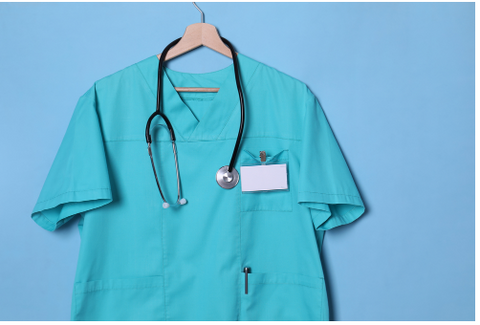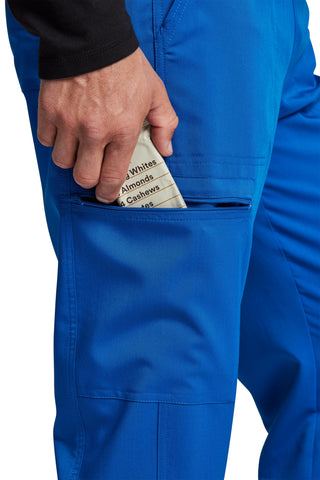Future of Medical Uniforms: Ready for Change!
In recent years, medical uniforms have taken a giant leap into the future. Gone are the days of wearing stiff, uncomfortable scrubs; instead, nurses and other healthcare professionals can now enjoy more comfortable, stylish, and functional uniforms that provide them with much-needed protection and comfort throughout their shift. Let’s take a look at some of the emerging trends and technologies in the world of medical uniforms.

Performance Fabrics
One of the most exciting advances in medical uniforms comes from performance fabrics. These fabrics are specifically designed to be lightweight yet durable enough to withstand repeated washings while also providing breathability and comfort. Performance fabrics come in a wide range of colors and styles, so you can find something that works for your unique style and needs. Plus, these fabrics are resistant to stains and water repellent, making them perfect for those long shifts in high-pressure environments.
Functional Design Features
Gone are the days where medical uniform design was limited to just pockets or buttons. Nowadays, designers are integrating advanced features into their designs such as heat-sealed seams for added durability, reinforced pockets to hold all your supplies securely in place, stretch panels to provide extra mobility during complex procedures or movements, moisture-wicking technology to keep you cool during hot days on the ward and antimicrobial woven fibers that help reduce bacteria growth on fabric surfaces—all without sacrificing an ounce of style!

Advanced Technologies
Technology is playing an increasingly important role in medical uniform design as well. From smart tags that monitor vital signs such as heart rate or respiration rate to RFID tags that track location data within hospitals or medical facilities, there is no shortage of advanced technologies being incorporated into modern medical uniforms. Additionally, many companies are even introducing customized tablets built into uniform pockets so healthcare workers can access patient records quickly on their way around the hospital!
It’s clear that we have only scratched the surface when it comes to what modern medical uniforms can do. As technology continues to evolve and advance at a rapid pace, so too will our understanding of how best to integrate these technologies into our everyday lives – including our workwear! By staying up-to-date with emerging trends in medical uniform design – both functional features and technological advancements – nurses everywhere can stay ahead of the game when it comes to looking great while staying safe on the job. So why wait? Invest in your future today by exploring what modern medical uniforms have to offer!

The Future is Here: What’s Next for Medical Uniforms?
Working in the medical field requires a lot of dedication and hard work, but looking good while doing it helps too! Medical uniforms have come a long way in recent years, with new trends and technologies that make them more comfortable and stylish than ever before. Let’s take a look at the latest advancements in medical uniforms and what they mean for those who wear them.
New Fabrics
The fabrics used to make medical uniforms have come a long way in recent years. Gone are the days of stiff polyester scrubs! Today’s medical uniforms are made from fabrics that are lightweight, breathable, and comfortable. In addition, many modern fabrics have moisture-wicking properties that help keep nurses cool even during long shifts. These fabrics also provide resistance against bacteria and other harmful germs, meaning you can stay safe without sacrificing style.
Smart Scrubs
Medical technology has advanced to the point where smart scrubs are now a reality. Smart scrubs come equipped with features like temperature sensors and RFID trackers that allow healthcare professionals to monitor their patients’ vital signs remotely. Smart scrubs also provide improved comfort and convenience by allowing healthcare professionals to store items such as stethoscopes or thermometers in pockets on their uniform. Finally, these advanced garments can be easily disinfected after each use, helping ensure that nurses remain safe from any dangerous germs they may encounter during their shift.
Trends in Color & Prints
Medical uniforms don’t just come in plain white anymore! Many hospitals now offer their staff a variety of colors and prints to choose from when selecting their uniform. This allows nurses to express themselves through their clothing while still maintaining a professional appearance. Printed scrubs are especially popular among younger healthcare professionals who want to look stylish while on the job. Whether it's neon florals or abstract artworks, there is no shortage of options when it comes to fashionable medical uniforms these days!
Medical uniforms have changed drastically over the past few years thanks to advancements in fabric technology and design innovation. From moisture-wicking fabrics to smart scrubs with built-in sensors, today’s medical uniforms offer unprecedented comfort and convenience for healthcare professionals everywhere. In addition, printed scrubs allow nurses to express themselves while still adhering to dress code standards set by their employers—allowing everyone involved to look good while staying safe! So if you’re looking for an upgrade from your current uniform situation, check out what the future of medical uniforms has in store for you today!

The Role of Fabric Quality and Durability in Medical Settings
Patient comfort is a top priority for medical settings, which is why it is important to select the right fabric for hospital beds, chairs, and other medical equipment. In addition to providing comfort, selecting the right fabric also helps ensure that healthcare providers can maintain a sanitary environment with minimal effort. Here’s what you need to know about fabric quality and durability in medical settings.
The Importance of Fabric Quality
Fabric quality is an important factor when selecting a suitable material for use in a medical setting. High-quality fabrics are not only comfortable but also durable, allowing them to stand up to frequent washing while still providing excellent performance. Furthermore, good-quality fabrics are less likely to tear or become stained during use and can help reduce the risk of infections spreading between patients.
Durability
Durability is another key factor when selecting fabric for use in a medical setting. Look for fabrics that have been designed specifically for use in healthcare settings as they are often more resistant to wear and tear than normal fabrics. They may also be designed with antimicrobial properties so that bacteria and viruses won’t be able to survive on the surface of the fabric. This helps create a safe and hygienic environment for staff and patients alike.

Maintenance
Choose easy-to-maintain fabrics for your medical setting. Look for synthetic fibers like polyester or nylon that require minimal cleaning and upkeep. These materials resist staining and fading, making them perfect for busy healthcare environments. By selecting the right fabric, you ensure patient comfort and maintain a safe and hygienic environment. Opt for high-quality fabrics designed for healthcare settings to provide durability and optimal comfort during treatment.







Leave a comment